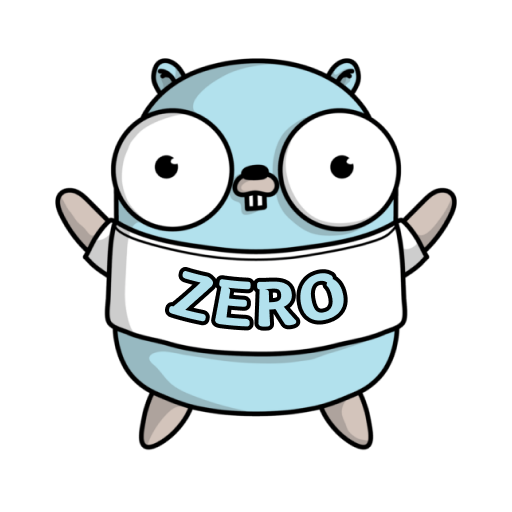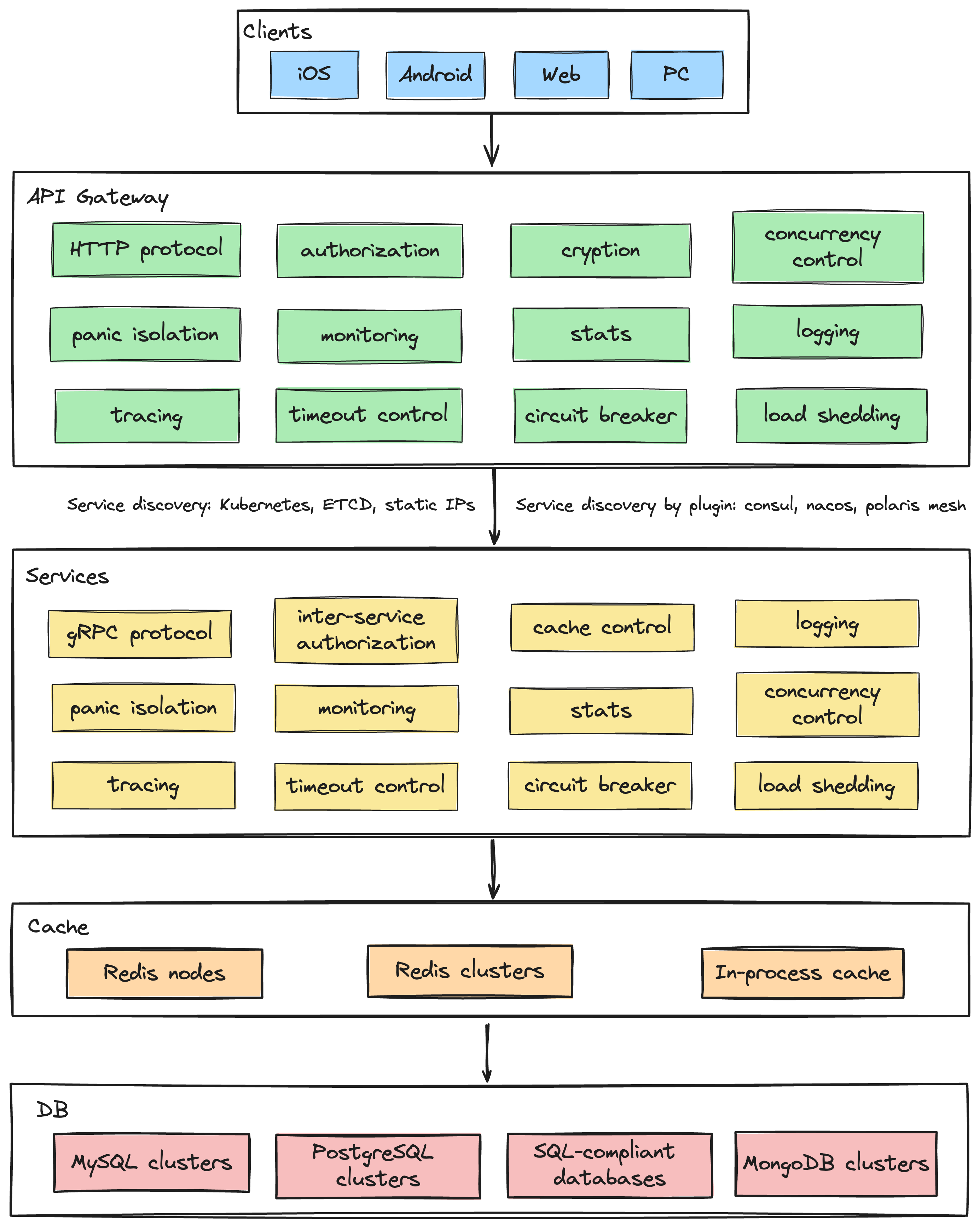
go-zero is a web and rpc framework with lots of builtin engineering practices. It’s born to ensure the stability of the busy services with resilience design and has been serving sites with tens of millions of users for years.
English | 简体中文
go-zero (listed in CNCF Landscape: https://landscape.cncf.io/?selected=go-zero) is a web and rpc framework with lots of builtin engineering practices. It’s born to ensure the stability of the busy services with resilience design and has been serving sites with tens of millions of users for years.
go-zero contains simple API description syntax and code generation tool called goctl. You can generate Go, iOS, Android, Kotlin, Dart, TypeScript, JavaScript from .api files with goctl.

At the beginning of 2018, we decided to re-design our system, from monolithic architecture with Java+MongoDB to microservice architecture. After research and comparison, we chose to: In early 2018, we embarked on a transformative journey to redesign our system, transitioning from a monolithic architecture built with Java and MongoDB to a microservices architecture. After careful research and comparison, we made a deliberate choice to:
Go Beyond with Golang
Self-Design Our Microservice Architecture
By designing the microservice architecture, we expected to ensure stability, as well as productivity. And from just the beginning, we have the following design principles:
After almost half a year, we finished the transfer from a monolithic system to microservice system and deployed on August 2018. The new system guaranteed business growth and system stability.
go-zero is a web and rpc framework that integrates lots of engineering practices. The features are mainly listed below:
As below, go-zero protects the system with a couple of layers and mechanisms:


Run the following command under your project:
go get -u github.com/zeromicro/go-zero
Full examples can be checked out from below:
Install goctl
goctlcan be read as go control. goctl means not to be controlled by code, instead, we control it. The inside go is not golang. At the very beginning, I was expecting it to help us improve productivity, and make our lives easier.
# for Go
go install github.com/zeromicro/go-zero/tools/goctl@latest
# For Mac
brew install goctl
# docker for amd64 architecture
docker pull kevinwan/goctl
# run goctl like
docker run --rm -it -v `pwd`:/app kevinwan/goctl --help
# docker for arm64(Mac) architecture
docker pull kevinwan/goctl:latest-arm64
# run goctl like
docker run --rm -it -v `pwd`:/app kevinwan/goctl:latest-arm64 --help
make sure goctl is executable.
Create the API file, like greet.api, you can install the plugin of goctl in vs code, api syntax is supported.
type (
Request {
Name string `path:"name,options=[you,me]"` // parameters are auto validated
}
Response {
Message string `json:"message"`
}
)
service greet-api {
@handler GreetHandler
get /greet/from/:name(Request) returns (Response)
}
the .api files also can be generated by goctl, like below:
goctl api -o greet.api
Generate the go server-side code
goctl api go -api greet.api -dir greet
the generated files look like:
├── greet
│ ├── etc
│ │ └── greet-api.yaml // configuration file
│ ├── greet.go // main file
│ └── internal
│ ├── config
│ │ └── config.go // configuration definition
│ ├── handler
│ │ ├── greethandler.go // get/put/post/delete routes are defined here
│ │ └── routes.go // routes list
│ ├── logic
│ │ └── greetlogic.go // request logic can be written here
│ ├── svc
│ │ └── servicecontext.go // service context, mysql/redis can be passed in here
│ └── types
│ └── types.go // request/response defined here
└── greet.api // api description file
the generated code can be run directly:
cd greet
go mod init
go mod tidy
go run greet.go -f etc/greet-api.yaml
by default, it’s listening on port 8888, while it can be changed in the configuration file.
you can check it by curl:
curl -i http://localhost:8888/greet/from/you
the response looks like below:
HTTP/1.1 200 OK
Date: Sun, 30 Aug 2020 15:32:35 GMT
Content-Length: 0
Write the business logic code
Generate code like Java, TypeScript, Dart, JavaScript, etc. just from the api file
goctl api java -api greet.api -dir greet
goctl api dart -api greet.api -dir greet
...

Join the chat via https://discord.gg/4JQvC5A4Fe


go-zero enlisted in the CNCF Cloud Native Landscape.
If you like or are using this project to learn or start your solution, please give it a star. Thanks!
此处可能存在不合适展示的内容,页面不予展示。您可通过相关编辑功能自查并修改。
如您确认内容无涉及 不当用语 / 纯广告导流 / 暴力 / 低俗色情 / 侵权 / 盗版 / 虚假 / 无价值内容或违法国家有关法律法规的内容,可点击提交进行申诉,我们将尽快为您处理。